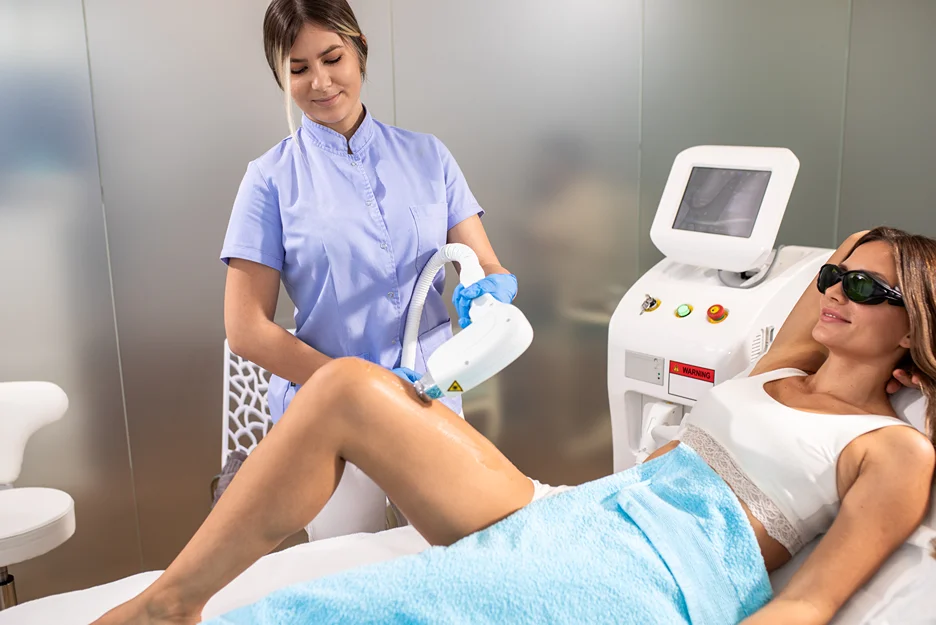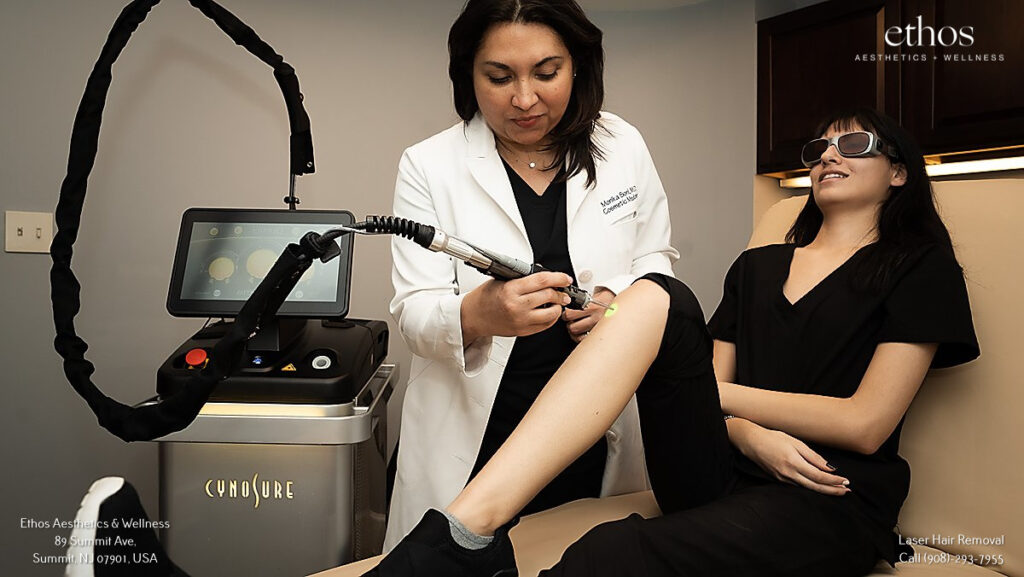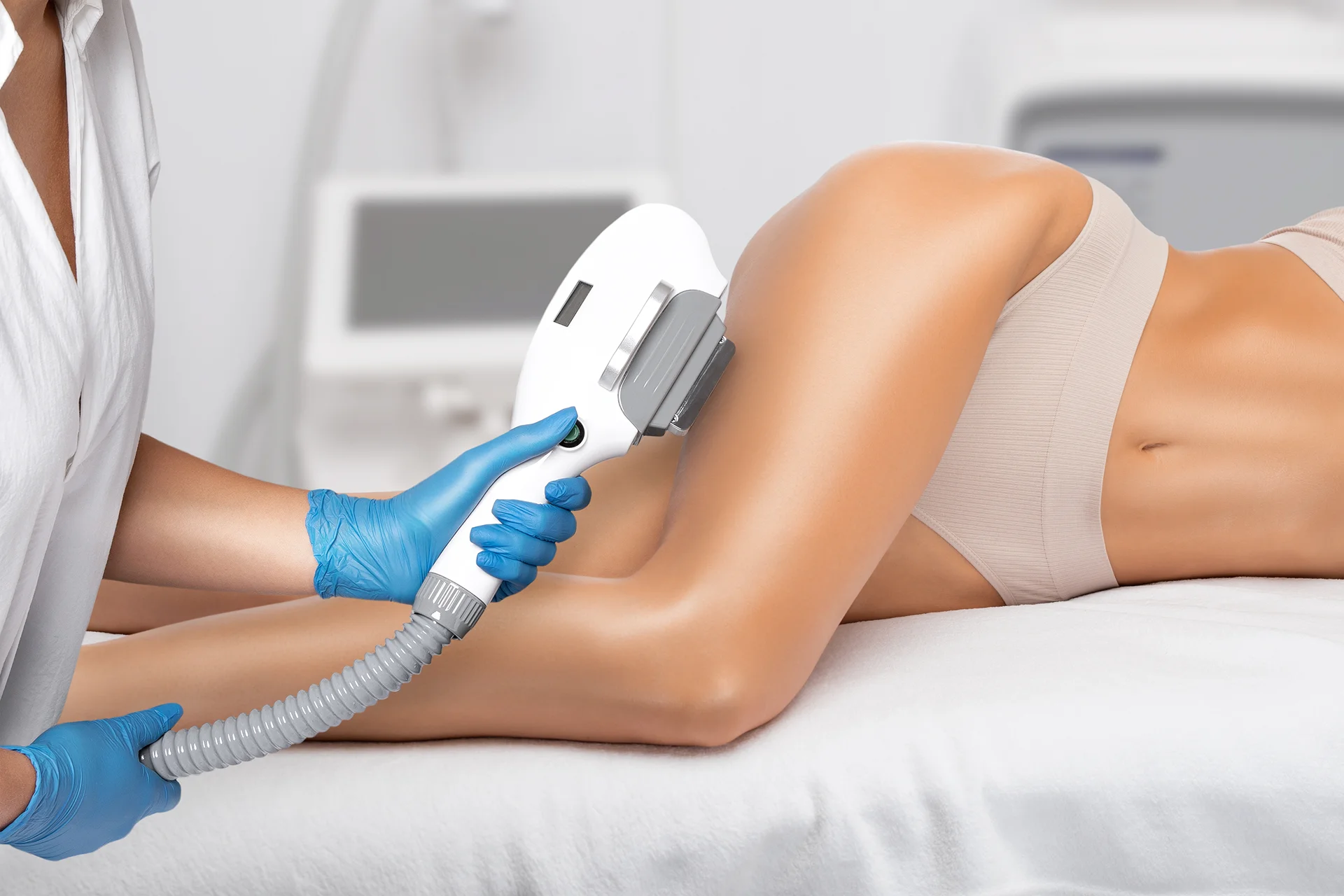Laser hair removal has become an increasingly popular way to achieve smooth, hairless skin. But many people wonder if they need to pause their normal workout routines after getting this laser treatment.
In this comprehensive guide, we’ll explore the key questions around exercising after laser hair removal:
- When can I start working out again after treatment?
- What activities should I avoid and why?
- How can I care for my skin properly during exercise?
- When will it be safe to resume my normal workout intensity?
Below you’ll find expert-backed recommendations to help you balance your fitness regimen and post-laser hair removal recovery.
When Can I Start Exercising Again After Laser Hair Removal?
Laser hair removal works by targeting the pigment in hair follicles with concentrated beams of laser light. This laser energy gets absorbed by the follicles, disabling them from future hair growth.
During the procedure, the surrounding skin areas can become irritated and inflamed from the laser interaction. That’s why most dermatologists recommend avoiding exercise for 24-48 hours after laser hair removal treatments.
Physical activity increases blood circulation, which can lead to swelling and discomfort of your sensitive hair follicles post-procedure. Exercise also makes you sweat more, which can further exacerbate skin irritation.
For these reasons, skin experts caution against intense workouts immediately after laser hair removal. Activities like spinning, running, weight lifting, hot yoga and boot camp-style classes are not advised until your skin heals.
“We recommend clients avoid strenuous activity for 1-2 weeks after laser hair removal treatments,” says Dr. Sasha Qadri, owner of Ethos Aesthetics + Wellness.
“Increased blood flow from intense exercise can lead to swelling, inflammation and potential blistering of treated areas. Perspiration and friction from tight workout clothes can also disrupt the skin’s healing process.”
However, Dr. Qadri confirms most patients can resume light physical activity 1-2 days post-treatment once any initial soreness subsides.
“Gentle exercises like walking, swimming, or light stretching are generally fine 24 hours after laser removal. Just listen to your body and halt activity if you experience discomfort or skin irritation.”
So when can you confidently work up a real sweat again? Here are general recommendations from laser hair removal experts:
- 24-48 hours post-treatment: Low impact exercise like walking and gentle stretching are OK. Avoid heat, friction and excessive sweating.
- 1 week after: Light cardio, yoga and lower-body strength training can be resumed gradually. Avoid hot rooms and activities that rub the treated area.
- 2+ weeks after: Slowly ramp up high-intensity training involving the treated areas. Minimize friction and sweating. Stop if skin becomes irritated.
- 1 month+ after: Most patients can resume their normal workout regimen as long as they continue protecting treated skin from sun exposure and irritation.
However, recommended downtime varies based on individual factors like skin type, hair color, treatment areas and laser settings used.
Be sure to get personalized guidance from your technician. It’s also crucial to monitor skin closely and halt activity if you notice irritation, blistering or excessive redness.
With the proper precautions, most people can get back to their regular fitness routine within a month post-laser hair removal.
What Activities Should I Avoid After Laser Hair Removal?

While light exercise can be resumed shortly after treatment, certain sweat-inducing activities should be avoided during the laser hair removal healing process.
High-intensity training is not advised for at least 1-2 weeks post-procedure, as overheating and friction can easily disrupt recovering skin. Here are some specific workouts dermatologists recommend postponing:
High-Impact Cardio: Avoid spin classes, running, HIIT training, kickboxing, and other workouts with repetitive impact that can chafe and inflame skin.
Heated Yoga: Hot yoga, Bikram yoga, and intensive flow classes in warm rooms are not ideal, as overheating can lead to adverse skin reactions.
Strength Training: Be cautious with weight lifting, Crossfit, bodyweight exercises like pull-ups, or any workout involving treated areas rubbing against equipment and clothing.
Saunas: Limit heat exposure from saunas, steam rooms and hot tubs, as this can exacerbate skin irritation.
If you’re craving an intense sweat session soon after laser removal, opt for low-impact cardio like walking, swimming or elliptical. Always choose loose, breathable fabrics that won’t chafe the treated areas.
Dr. Qadri also advises wearing protective clothing during the healing period:
“When resuming exercise after laser hair removal, be sure to keep treated areas covered to avoid sun exposure. Friction from clothing can be minimized by wearing loose shorts, pants and shirts to allow the skin to breathe.”
So while you may need to press pause on your normal high-intensity training, there are still plenty of lower impact workouts you can safely perform a few days after laser treatments.
Just remember to keep it gentle, listen to your skin, and work with your dermatologist to determine an appropriate exercise timeline.
How Can I Care for My Skin After Laser During Workouts?
Once you’re cleared for exercise after laser hair removal, proper skincare is crucial for keeping your sensitive treated skin happy. Here are some tips from the experts at Ethos Spa:
Cleanse Gently: Use a mild cleanser like Cetaphil after workouts to remove dirt, sweat and bacteria without irritation. Avoid harsh soaps and exfoliants.
Apply Soothing Products: Aloe vera gel, vitamin E oil and gentle moisturizers calm inflammation. Discuss medicated creams with your provider if needed for itching or blistering.
Keep Skin Cool and Hydrated: Drink plenty of water before and after exercise to prevent overheating.Splash cool water on treated areas or use a damp cloth. Avoid direct ice contact.
Wear Loose Fabrics: Choose breathable workout clothing to allow sweat evaporation and reduce friction on treated skin.
Protect from The Sun: Wear tightly woven fabrics, hats and SPF 30+ sunscreen when exercising outdoors. Avoid direct sun on treated skin.
Listen to Your Skin: Stop working out immediately if you experience stinging, excessive redness or irritation. This will prevent further inflammation.
Properly caring for your skin will help you bounce back faster from laser sessions. Be extra gentle while washing,Apply soothing lotions, keep the area hydrated and protected with sunscreen if outdoors.
Most importantly, pay attention to how your skin feels during exercise. Stop if you notice any worrisome irritation or discomfort. Give your body adequate rest between workouts so those hair follicles can heal properly.
When Will It Be Safe To Resume My Normal Workout Routine?
We all have different fitness regimens and goals when it comes to working out. Naturally you’ll be eager to get back to your normal sweat sessions after laser hair removal treatment.
But patience is key, as every body heals differently. Your laser technician will provide a personalized timeline, but below are general benchmarks experts provide:
2 Weeks After: This allows time for initial healing before you introduce sweat and friction. Start slowly with low-impact exercise.
4-6 Weeks After: Most patients can gradually reintroduce more intense workouts involving treated areas at this point.
3 Months After: Patients typically feel comfortable resuming their full pre-laser exercise routines within this timeframe. But proceed cautiously.
The reason for gradually ramping up intensity stems from the hair regrowth cycle. During laser treatments, not all hair follicles are actively growing. It takes time for remaining follicles to reactivate so they can be disabled during follow-up sessions.
This means some stubborn hairs may start to grow back weeks later and become irritated by friction from intense workouts. Experts recommend more frequent but lighter exercise during the weeks between treatments. Monitor skin closely for any reactions.
“We ask clients to slowly increase exercise intensity between laser sessions,” advises Dr. Qadri. “This allows us to fully treat all hair follicles over your entire course while avoiding adverse skin interactions that could set back results.”
Your provider will schedule follow-up laser appointments every 4-6 weeks until remaining hairs are sufficiently targeted. Be sure to communicate your workout regimen so they can best advise on appropriate activity levels.
The takeaway? Gradually progress exercise intensity over time. Even months after your last session, remain vigilant about irritation and hair regrowth. If you ever experience concerning skin symptoms, dial the activity back and notify your dermatologist.
Key Takeaways and Concluding Advice

Laser hair removal offers an effective way to eliminate unwanted body hair with long-lasting smoothness. But this treatment requires an initial recovery period to avoid complicating the healing process.
Here are the top tips to remember:
- Avoid strenuous workouts for 24-48 hours after laser removal sessions. This allows inflammation to subside.
- Introduce gentle, low-impact exercise first before progressing to higher intensities 1-2 weeks later.
- Choose loose, breathable fabrics. Stop workouts immediately if skin becomes irritated or painful.
- Hydrate skin, avoid sun exposure and friction, and apply soothing products like aloe vera gel.
- Gradually reintroduce your normal workout activities over 4-6 weeks as skin adapts to hair loss.
- Communicate your fitness regimen with your provider to establish an appropriate exercise timeline.
- Monitor for irritation and halt activity if skin seems aggravated. Prioritize healing above all else.
With smart precautions, most people can safely balance laser hair removal treatments with their normal workout routines. Be patient, listen to your body, and consult your dermatologist for tailored advice.
At Ethos Aesthetics + Wellness, our experts specialize in making laser hair removal compatible with your lifestyle needs. Schedule a consultation today so we can craft an optimal treatment plan and aftercare regimen to support your fitness goals. Invest in smooth, stubble-free skin without compromising your active life.







